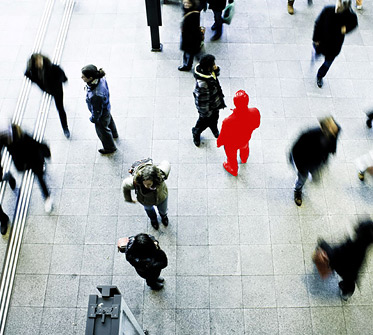As a former airline employee, I fondly remember the days when airport security was far less frustrating. After passing through a metal detector, passengers were pretty much free to roam the airport. Now, it’s long lines, emptying pockets, and removing coats, shoes, and belts. We have items confiscated because we forgot to leave them at home. (According to TSA.gov, a Harry Potter wand is okay to bring on board, but pack your Magic 8 Ball in your checked luggage.)
Worse, we may assume that airport scanning technology is foolproof. While the exact number is classified, it’s been reported that as much as 70% of banned items are still getting through. The promising news is that your airport security experience will improve over the next few years.
There are multiple layers of security technology in development that will cause the false alarm rates at the TSA checkpoints to go down and the lines to move faster. And they’ll make the airport perimeter, including outlying parking areas, much more secure.
After once having my bare feet wanded by a TSA agent, I’m particularly excited about next-generation technologies, such as a 3-D imaging foot scanner called the SS1 Shoe-Scanner developed by an elite international team of threat detection specialists at Plymouth Rock Technologies, which is in the final testing phases. This team is working on several security devices that will soon become more widely available.
These devices will use various technologies, including millimeter waves and artificial intelligence, to identify threats. All this technology is safe and has already proven to work in other applications. Nearly every car coming off the production line is equipped with millimeter-wave radar for cruise control, blind spot detection, and collision avoidance.
Meanwhile, here are five simple steps that can reduce your anxiety levels and help airport security personnel be more effective.
1. Dress airport friendly. Choose shoes that are easy to take on and off. If you wear a short top, make sure you can comfortably raise your arms without exposing them too much. Some belts and metal jewelry will set off screening devices. And baggy clothes may be used to conceal items and may draw the TSA’s attention.
2. Use a luggage tag that hides your name and home address. The person next to you on the airport shuttle van or in line at check-in may be a burglar looking for addresses of empty homes.
3. Pack your medications and other carry-on essentials inside a zipped bag. Using a zipped bag will prevent someone from reaching in to grab your tablet or anything else you don’t want to lose. Also, never leave your belongings unattended. Don’t trust a stranger to watch them while you run to the bathroom. Take them with you, even if it means schlepping several items.
4. Allow plenty of time for unanticipated delays. Arrive at the airport much earlier than you believe is necessary. When you’re feeling rushed or stressed, you are less likely to notice suspicious people around you. If everything goes smoothly, reward yourself by grabbing a snack or browsing the gift shop before your flight.
5. Make your ground transportation arrangements before you leave. Planning ahead may help you avoid making risky decisions, such as sharing a taxi with a stranger. Know the airport and hotel shuttle schedules. Confirm that they will be running at the time of your arrival. If you plan to use rideshare, set it up before you leave home. Be aware that some airports have moved rideshare pick-up/drop-off points away from the terminals, so plan accordingly.
Would you prefer to keep your shoes on while going through security screening?
Right now, only adults over 75 and children ages 12 and under are exempt from having to remove shoes at airport terminal security checkpoints. That may change very soon with the introduction of SS1 Shoe-Scanner, millimeter-wave shoe scanning technology.
The SSI is a floor-mounted 3D imaging system that uses harmless millimeter wave imaging techniques, combined with artificial intelligence, to inspect footwear without the need for removal by the wearer. Hello, faster checkpoint lines!
This technology is different from other types of shoe scanners that can only detect metal and cannot find chemical powders or other contraband. The SS1 will be able
to detect weapons, explosive substances, compounds, or electronics concealed in shoes and other footwear.
If an alarm is triggered, the passenger will simply be asked to take off their shoes for more intensive screening. Shoe scanners may also appear at other key airport security locations, such as the ticket counter and at the gates.
The Plymouth Rock Technology team is also working on millimeter-wave and AI technology devices that may one day be used at off-airport parking lots, walkways, and baggage check-in counters to identify potential security threats. These streamlined safety measures may lead to more pleasant travel experiences for all of us!
By Robin Miller







